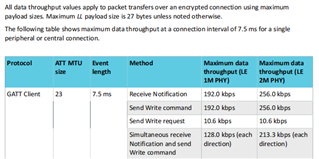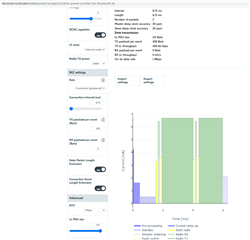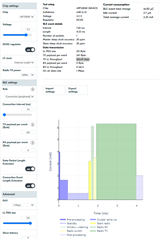Hi,
- What's the maximum throughput for nRF52832 as peripheral?
- S132 7.1 SDS demonstrates configuration for 192kbps. But I noticed that DLE is not yet enabled. So can it be even faster? For instance, reach 50KB/s? If it can be, how do I set those parameters?

- Another thread mentioned that, RAM for softdevice needs to be modified when attempting to extend gap_event_length. Any further explanation on relationship between event_length and RAM?
Your help is appreciated,
Ava


